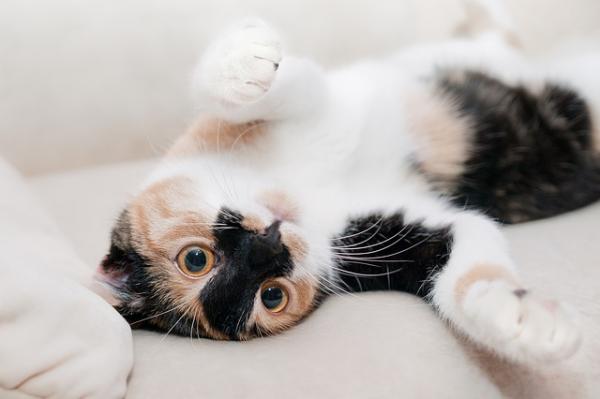Language and communication of cats
Cats, although they show the image of being mysterious and enigmatic, are very communicative and expressive animals. Like human beings, they have developed practically all the senses, their best communication skills are the vocal, tactile, visual and olfactory. However, their main form of communication is body language. It can be so precise, that if we learn to decipher it, we will know what our cat wants to tell us at all times.
Even if you and your cat do not speak the same language, they can still communicate and do it fluently. Learn and learn more about language and communication of cats, in this article .
Body language says more than a thousand words
The language and communication system of cats is really interesting. His greatest specialty is in the body area. Cats love moving the body to express moods, wishes and dislikes.
Pay attention to every movement of your cat, it may not be simple actions, but it is trying to say or ask you something. Postures, looks, position of the ears, facial expressions and movement of the tail, all this focuses on the part of your mind.
Here are some clues to reveal the cat mysteries:
- If your cat carries his ears forward is that he is alert, interested in something or happy. If you have them on your side or back, you may be a little irritated, angry or scared about something.
- Si your back is curved When you put your hand to caress it, it is a sign that you are interested and that you like it. If, on the contrary, it shrinks, it means that at that moment he does not want to have physical contact.
- When I have the erect tail is that he is alert for something or happy. If that coat at the end of its tail is stopped, it is a sign that is scared or upset. The typical tail between the legs is that he is anxious or embarrassed by some mischief he has just performed. The faster the tail swings from one side to the other, it means your level of anger, you can also detect this by the state of your pupils, when they are fully dilated is that your cat is very agitated.
- If you see that your cat sponges or seems get biggerHe has spasms in his tail and spreads his spine, he does not want to see you in paint. These are signs of possible aggression.

The physical demonstrations
Cats that have a good self-esteem, with the intention of showing off, scratch surfaces in front of other more timid cats. When your cat is very happy you will see how he will knead any soft area he finds.
To mark territory rub your chin and body against the object of your affection, this could be a toy, a piece of furniture and even you. The cats they are always marking what they believe is their property, this means that your cat, besides loving you, is considered your owner.
Smell to believe
Cats not only smell through the nose, also they inhale knowledge. His learning process is very much due to his olfactory ability. There is something called “marked by smell” and basically means that your cat is leaving its essence where it wants to go. To carry out this transfer they usually rub themselves with everything, in this way, other cats will smell their presence in that place and they will know that it is part of their territory or that they have passed through there.
Their sense of smell is so important that they have evolutionarily developed a small additional organ (that few creatures have in the animal kingdom and that supports the traditional sense of smell) called “The Jacobson Organ“
This organ is located on the roof of the mouth, behind the teeth and is connected to the nasal cavity. For cats, the action of smelling is quite an experience, Jacobson absorbs the odor molecules, intensifying the fragrances and at the same time providing even more information about the scented object.

The cat meows
Many cats just need to talk, they communicate with each other and with their owners. The cat sounds are very different from each other and are not so complicated to identify. The intensity, tone and frequency of the meow reflect emotions and needs.
- For example, if your cat is lying on its back and purrs (the typical purrr) is that it feels totally relaxed.
- However, if it is the same lying down but snarling, leave him alone, he is asking you to give him his space. Attention if the purr is different than usual, maybe your cat will hurt something.
- If you hear a pattern of meowing for a long time, your cat may be hungry and asking for food. Just as if that pattern is intense screaming, growling and even whistling, your cat could behave aggressively.
- Another type of meow is the one that they experience during the heat of the cats or the cat. It is very important to know that a cat in heat is susceptible to escape from our home, with all that entails. Visit our post about the advantages of sterilizing a cat and break the myths that exist.
- Pay attention to all forms of expression, make the effort to understand and then translate their language, will help you build a better relationship with your pet.
If you want to read more articles similar to Language and communication of cats, we recommend that you enter in our Curiosities section of the animal world.


